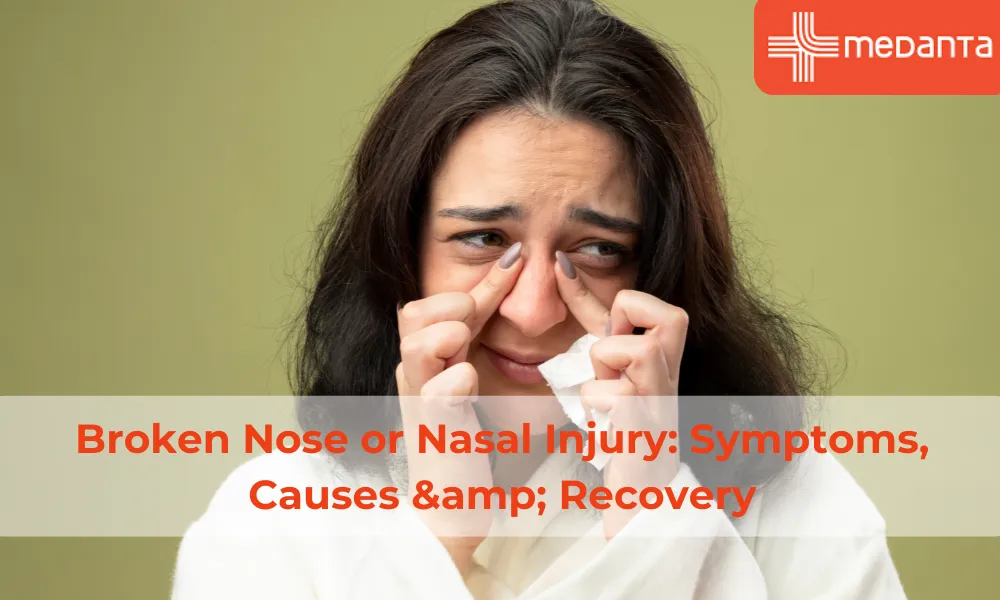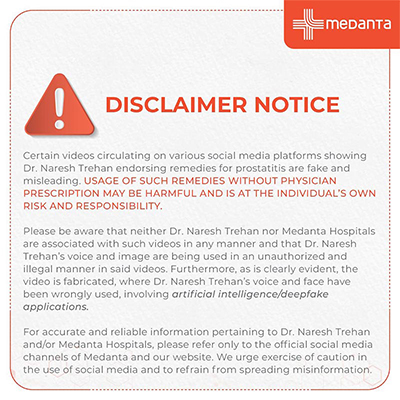Broken Nose or Nasal Injury: Symptoms, Causes & Recovery

TABLE OF CONTENTS
- How Does a Broken Nose Look and Feel?
- Causes of Nasal Bone Fractures You Might Not Expect
- How to Tell If It's a Break or Just a Bruise
- First Aid for a Suspected Nasal Fracture
- When to Seek Medical Care for Nose Trauma
- Medical vs Surgical Treatment for Broken Noses
- Recovery Timeline: What to Expect After a Broken Nose
- Prevention
- Tips to Avoid Long-term Nasal Damage
- Conclusion
- FAQs
Nasal bones break more frequently than other facial bones, making the quick detection of broken nose symptoms vital. A nasal fracture occurs when the nose's bone or cartilage cracks or breaks. This painful injury can affect anyone since accidents never discriminate.
Athletes in contact sports have a greater chance of getting their nose broken. Children and seniors need to be extra careful because their bone mass is lower. A broken nose usually shows up as a crooked appearance and bruises around the eyes. The swelling typically continues for 3 to 5 days after the injury. Blood collection inside the nasal septum needs immediate attention to prevent major reconstructive surgery. This article explains broken nose cartilage, treatment choices, and healing timelines to guide people through this painful yet manageable condition.
How Does a Broken Nose Look and Feel?
Breaking your nose happens when the bone or cartilage breaks—this needs proper care to prevent future problems. You might experience:
Your nose hurts and feels tender to the touch
The bridge and area around your nose swell
You might get black eyes on one or both sides
Your nose makes crackling sounds when touched
The nose looks twisted or out of shape
You find it hard to breathe through your nose
Your nose might bleed
Causes of Nasal Bone Fractures You Might Not Expect
Playing contact sports like football and hockey
Slips and falls make up the majority of cases in older patients
Fighting
Car accidents
Bumping into objects unexpectedly
Getting hurt at work
How to Tell If It's a Break or Just a Bruise
Bruises usually heal within two weeks
A broken nose makes crackling sounds when touched
The nose's shape changes noticeably with a break
You keep having trouble breathing
Bruise colours change as they heal—red becomes blue/purple, then green, finally yellow/brow
First Aid for a Suspected Nasal Fracture
Put ice wrapped in a cloth on your nose for 10-15 minutes several times each day
Sleep with your head raised
Use over-the-counter painkillers as needed
Wait 48 hours before blowing your nose
Leave your nose alone—don't touch or move it
When to Seek Medical Care for Nose Trauma
Immediately contact your doctor in case of:
Clear fluid runs from your nose
Your nose won't stop bleeding
Your head hurts badly, and your vision blurs
Your nose stays crooked after the swelling goes down
You still can't breathe properly
You see a purple swelling inside your nose (septal hematoma)
Medical vs Surgical Treatment for Broken Noses
Small breaks need ice, pain relief and watching.
Doctors can realign your nose within 14 days for adults, 4 days for children.
Surgery options include septoplasty for septum repair and rhinoplasty for reshaping.
Doctors must drain septal hematomas to save cartilage.
Recovery Timeline: What to Expect After a Broken Nose
Pain and swelling reach their peak on days 1-2
Swelling starts going down by days 3-5
Bruises fade during weeks 1-2
Bones become stable in weeks 3-5
Bones fully join in weeks 4-8
You can play contact sports again after week 6
Prevention
Your nose needs protection from injuries to avoid repeated pain and treatments. Prevention works better than cure when it comes to nasal fractures.
Preventing Future Nose Injuries
Sports players need proper face protection. Players who wear helmets with good face guards substantially reduce their risk of nasal fractures in contact sports. You should always buckle up when driving or riding in vehicles.
Kids should learn not to stick objects into their noses and keep their nails trimmed. They must also stay away from an animal's mouth.
Seniors can make their homes safer by installing handrails on stairs and in bathrooms. They should remove loose rugs, ensure proper lighting, and keep walkways free of obstacles.
Tips to Avoid Long-term Nasal Damage
Healthy nasal passages help prevent complications after a nose injury. You should use saline nasal sprays two to three times daily to keep your nostrils moist. A bedroom humidifier helps, especially during dry seasons.
Blow your nose gently—one nostril at a time, instead of forcing it. Your body needs plenty of water throughout the day to keep mucus thin and loose. A HEPA filter can help remove allergens from your space.
Conclusion
A broken nose can be scary, but most people heal well with the right care. Your recovery depends on spotting the signs early. You'll notice pain, swelling, and that telltale crooked appearance that suggests a fracture rather than a bruise.
Your treatment will depend on how badly your nose is broken. Simple breaks usually get better with ice and rest. More serious fractures might need a doctor to set your nose or surgery in severe cases. The good news is that healing starts within days, though full recovery takes several weeks.
The best way to avoid these injuries is through prevention, especially if you play sports or have broken your nose before. Protective gear like face guards and helmets can save you from painful injuries. Older adults should make their homes safer by removing any tripping hazards.
Clear fluid leaking from your nose or trouble breathing after an injury means you need medical help right away. These signs could point to problems more serious than a simple break.
Saline sprays and proper humidity levels help keep your nasal passages healthy as you recover. Most people end up recovering from nasal fractures without lasting issues when they get proper care and listen to their doctor's advice.
FAQs
How do I know if my nose is broken or just bruised?
A broken nose shows these distinct signs that you won't see with a bruise:
Your nose looks crooked or misshapen
You hear a crackling sound if you touch it
Breathing through your nostrils remains difficult
The swelling stays for more than 3-5 days
Bruises usually fade away in two weeks. Fracture symptoms last much longer.
What are the most common symptoms of a broken nose?
Look out for these key signs:
Your nose hurts and feels tender to the touch
The nasal area becomes swollen
You see bruising under your eyes ("black eyes")
Your nose bleeds
Breathing becomes difficult
You hear a crunching sound if you touch your nose
Your nose looks different or misaligned
What should I do right after a nose injury?
Take these steps quickly:
Sit up straight and lean forward so blood doesn't flow down your throat
Put ice wrapped in a cloth on your nose for 10-20 minutes several times daily
Take pain relievers as directed on the package
Sleep with your head raised
Don't blow your nose for at least 48 hours
Can a broken nose heal without treatment?
Yes, it is true that small fractures heal by themselves within three weeks. You should see a doctor if:
Your nose stays crooked after the swelling goes down
You still have trouble breathing
Your nose keeps bleeding
Pain doesn't go away with treatment
When do you need surgery?
You might need surgery if:
You have severe fractures with multiple broken bones
You can't breathe properly
Your septum needs repair through septoplasty
You want to fix cosmetic issues through rhinoplasty
What happens if you don't treat a broken nose?
Leaving a broken nose untreated can cause serious problems:
Blood might collect in your septum and need immediate drainage
Your nose could stay permanently deformed or crooked
You might always have trouble breathing
You could get more sinus infections
Serious infections like meningitis become more likely
Sleep problems, such as snoring and sleep apnea, might develop






